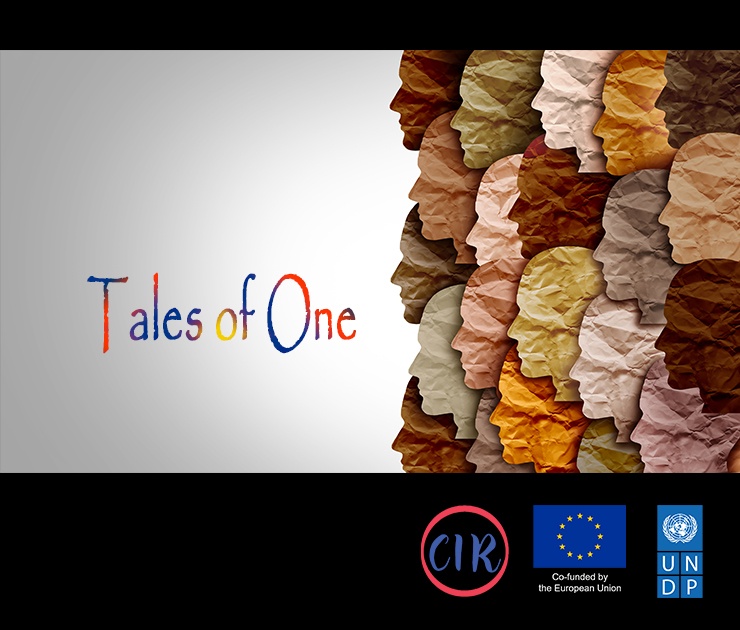For centuries, Sri Lankans have lived in harmony, dealt with violence, experienced exclusion and discrimination, strived to create a better country for everyone, recording both triumphs and failures. The story of Sri Lanka, particularly after gaining political independence, has been chequered.
When nearly three-decades of armed conflict came to an end offering a window for inclusive peace, it proved momentary. New conflicts have emerged and new divisions have been created. This nation’s story has been marred by violence, mistrust and divisive politics, undermining the ability to celebrate our diversity and rise as one.
Through this country-wide collection of visual stories, we attempt to showcase heartwarming examples of co-existence, community peace and respect for diversity – a journalistic attempt to offer an alternative narrative.
The stories bring you a wide range of experiences from urban centers and unknown hamlets in Sri Lanka, shining examples of unity, community peace, inclusion, co-existence and respect for diversity. They represent the Sri Lanka we dare to dream of.
From a village in deep south emerges a lesson in reconciliation
In the remote village of Malaykolaniya in the southern district of Hambantota, religious leaders foster a shining example of unity and religious tolerance.
In Malaykolaniya, the Buddhist priest plays the role of unifier, engaging with the Muslim community and making the Buddhist temple a common space for people of all faiths. The temple is the chosen venue to hold Iftar, a meal taken at sundown by Muslims during the month of Ramadhan to end the day’s fasting. The temple plays not just a religious but a cultural one and has become a place for all communities to come together. The temple is generously supported by the Muslims, forming the majority in the small village. The local Islamic religious leadership plays an equally significant complementary role. Together, they demonstrate a heartwarming example of unity in diversity.
A story by Rahul Samantha Hettiarachchi
A school delivers a lesson in co-existence
From where do children learn discriminatory practices, hate and violence? Who divides children along ethnic and religious lines? A school in northwestern Sri Lanka wished to take corrective action and considered change must begin within the school premises.
Kammandaluwa Bilingual Junior School in the northwestern district of Puttlam is unheard of but the school offers a vital lesson in co-existence and respect for diversity. This bilingual school encourages children from different ethnicities to come together for all school activities, from cultural to religious, thus learning each other’s culture and faith. These children also learn the value of proficiency in both Sinhala and Tamil languages in a country that has used language as a political tool of deep division.
A story by Fathima Silmiya
When faith is no barrier to pay homage
In multi-ethnic, multi-religious Sri Lanka, these very identities have been repeatedly used to drive deep divisions among the people, but there are examples when people overcome such divisions by focusing on co-existence.
Jinnah Nagar, a small township in Trincomalee in eastern Sri Lanka has a story unlike any other. A Buddhist shrine built by the Sri Lanka Army during the years of armed conflict has now turned into community heritage. The well-maintained temple is taken good care of by the Jinnah Nagar residents, all of them Muslims.
After the war’s end, the Army wanted to remove the temporary camp and the temple. Villagers opposed this move and the owner of the land where the shrine is located requested the military to not remove the shrine which they resident consider an integral part of the town’s identity, one that the community wishes to protect. Come visit Jinnah Nagar’s quaint Buddhist temple to find how Muslims preserve and protect it.
A story by Mangalanath Liyanaarachchi
Displaced Tamils find a home in a Muslim village
Negama truly lives up to its name: a village where relations live in community. More than 1,500 Muslim families are resident in the Negama village located in the northcentral district of Anuradapura. These villagers, despite the hardships they endure, weave a remarkable tale of co-existence and harmony for they have warmly welcomed several displaced families of Indian origin Tamil families to live among them.
While villagers do their best to support the displaced persons, one of them donated a portion of his private land to the “new residents” to build homes and settle in Negama.
A story by Bishrin Mohomed
When a Buddhist temple became a temporary home for fleeing Muslims
When Digana, a small township in Kandy was consumed by violence in 2018, the bonds that kept the multi-ethnic local community together were temporarily shattered.
Yet, Digana was not just about violence and discord. There were others who fought violence with non-violence and made every effort to maintain community peace and protect people.
Ven. Dhammananda thero, the chief incumbent at the Gomagoda Vihara in Kandy was trying to douse the Digana fires through practical action. When Digana began burning, the monk converted his temple premises to a safe haven for Muslims fleeing the area fearing attacks, an act of kindness Muslims in the area recall with gratitude and affection.
A story by Fathima Zeeniya Musadique
Minuwangoda rises like a phoenix
The 2019 Easter Sunday bombings have left a legacy of violence that is not easily forgotten.
Following the coordinated serial bomb explosions, several Muslim-owned businesses in the Minuwangoda town came under attack, acts of retaliation that further disrupted community peace.
In the aftermath, some Sinhalese began openly boycotting Muslim-owned businesses and avoided eating food from Muslim eateries. Two years later, Sinhalese are engaged in renovating the vandalized business premises owned by Muslims and are promoting co-existence through peace committees.
A story by Rihmy Hakeem
A man named Mohideen
Here is an inspiring story from a man named Mohideen.
A former research officer of the Department of Archeology, Mohideen is a tireless advocator of conserving both artifacts and ancient temples scattered around the island to preserve the island’s history. He has been instrumental in creating community awareness among adults and children about the need to conserve archaeological sites and objects and continues to prove a source of inspiration to many.
A story by Mohamed Mithun
Burying a dispute six feet underground
Tamil and Muslim communities have co-existed in eastern Sri Lanka for decades and their harmonious living remained unchallenged for a long time. But a dispute over a burial ground in Nintavur in the eastern district of Ampara changed the village dynamics, driving a wedge between the two communities.
The land in dispute was donated by a Muslim citizen to be used as a burial ground by the Tamils in the area. But the once peaceful village began experiencing the divisive force of politics when villagers decided to come together and resolve the dispute through a community dialogue process.
The villagers from Nintavur taught the country that they can resolve disputes among themselves, and to do that, they can rely on the inter-community trust that has lasted for decades.
A story by Mohammathu Mursith
Feeding mouths, feeding hearts
Agriculture plays a major role in the food security in the island. This story explores how agricultural practices can serve as a model for ethnic unity and social harmony.
In the former conflict areas of Trincomalee and Kantale in Sri Lanka’s east, farmers from all three ethnic groups – Sinhalese, Tamils, and Muslims – are now engaged in community farming and are reaping a good harvest.
They are determined to produce non-toxic food for local consumption and learn from each other to ensure agricultural best practices are followed. What’s more, they celebrate each other’s religious and cultural festivities as one, harvest and market their produce together. They also raise a common voice in the interest of the farming community, for a certified price and equal marketing opportunities.
A story by Aashik Wadood
The Temple of Unity
Kataragama literally means ‘village in the desert.’ A small village during medieval times, thanks mostly to the iconic Kataragama Hindu temple located in the fringes of Moneragala district in the Uva Province is now a bustling township dedicated to one of the most loved and feared Sri Lankan deities, God Skanda.
Worshiped by Hindus, Buddhists and the indigenous Vedda community alike, the annual Kataragama festival is colorful, elaborate and multi-cultural.
The temple of Skanda has definitely risen above the religious differences that prevail in the country. Hindu and Buddhist pilgrims from all over the country come on a multi-day trek from the North and the South to pay homage to this powerful deity who is known for bestowing boons and sometimes, punishment.
A powerful symbol of religious ad cultural convergence, the Kataragama temple is a unique place of worship where Sri Lanka’s two main ethnic groups overcome their differences to join in prayer at the feet of God Skanda, a reflection of religious and cultural diversity celebrated in unison.
A story by Roshan Gunasekara
Waters of Reconciliation
Do fish recognize human differences? No. Does poverty? The answer is no.
These are truisms the fisherfolk of Bandagiriya, a remote hamlet in the Hambantota District, swear by. Traditional fishermen from Sinhala and Muslim communities, these families for decades have eked out a living by fishing in the historic Bandagiriya tank.
The two communities share fishing boats, fishing gear and much more. But what they seek to preserve the most is community peace.
They share the main positions in the local fishermen’s association, created to improve their economic status. Though humble fishermen, their dedication to maintaining peace at the community level and their shining example of co-existence have been often recognized. On two occasions, the fishermen’s collective received presidential recognition for their outstanding commitment to preserving community peace.
A story by Chandrasena Gamage
When faith leaders drive community peace
Debathgama is a quaint little village in Kegalle where Sinhala and Tamils of Indian origin live side by side and primarily work in the rubber plantations and the scattered tea cultivations.
Recent developments are threatening co-existence between the two communities, an economic problem is rapidly turning into a communal issue.
Many Tamil families have borrowed from Sinhala families and unable to repay these loans, they take more loans, unable to end a vicious cycle of debt. The lenders are finding it difficult to recover loans and disputes between the two communities are now on the rise.
This story focuses on the role of local religious leaders in maintaining community peace through community dialogue, an effective way of resolving disputes.
A story by Nirmani Colambage
Traders in Aluthgama seek a new lease of life
Seven years after communal violence consumed lives, homes and businesses, the bitterness of past violence, hate and discrimination are not easily forgotten by the residents of Aluthgama.
This small town, though once so peaceful is now a cauldron of simmering discontent and mistrust. But Aluthgama had seen better days, the kind of days people now yearn for.
Despite the existing mistrust and tension, an example of brotherhood has emerged from the pavement hawkers and traders in the Aluthgama town.
When Muslim traders attend Friday prayers, their Sinhala counterparts voluntarily protect the goods and take care of sales. When Sinhala traders step out, Muslim traders take care of the others’ businesses as their own. For them, the violence from seven years ago should not be allowed to haunt their homes and community anymore.
A story by Fathima Afra
Hambantota undivided
Hambantota, a southern coastal district in Sri Lanka is home to Sinhalese, Tamils and Muslims. Known as a trading port and now a rapidly developing district, trading activities in the main city have been affected by the relocation of the main hospital.
The traders from the Hambantota city are unanimously urging the government to provide a fair solution to all traders, irrespective of race or religion.
A story by Koshala Gunavardhana




